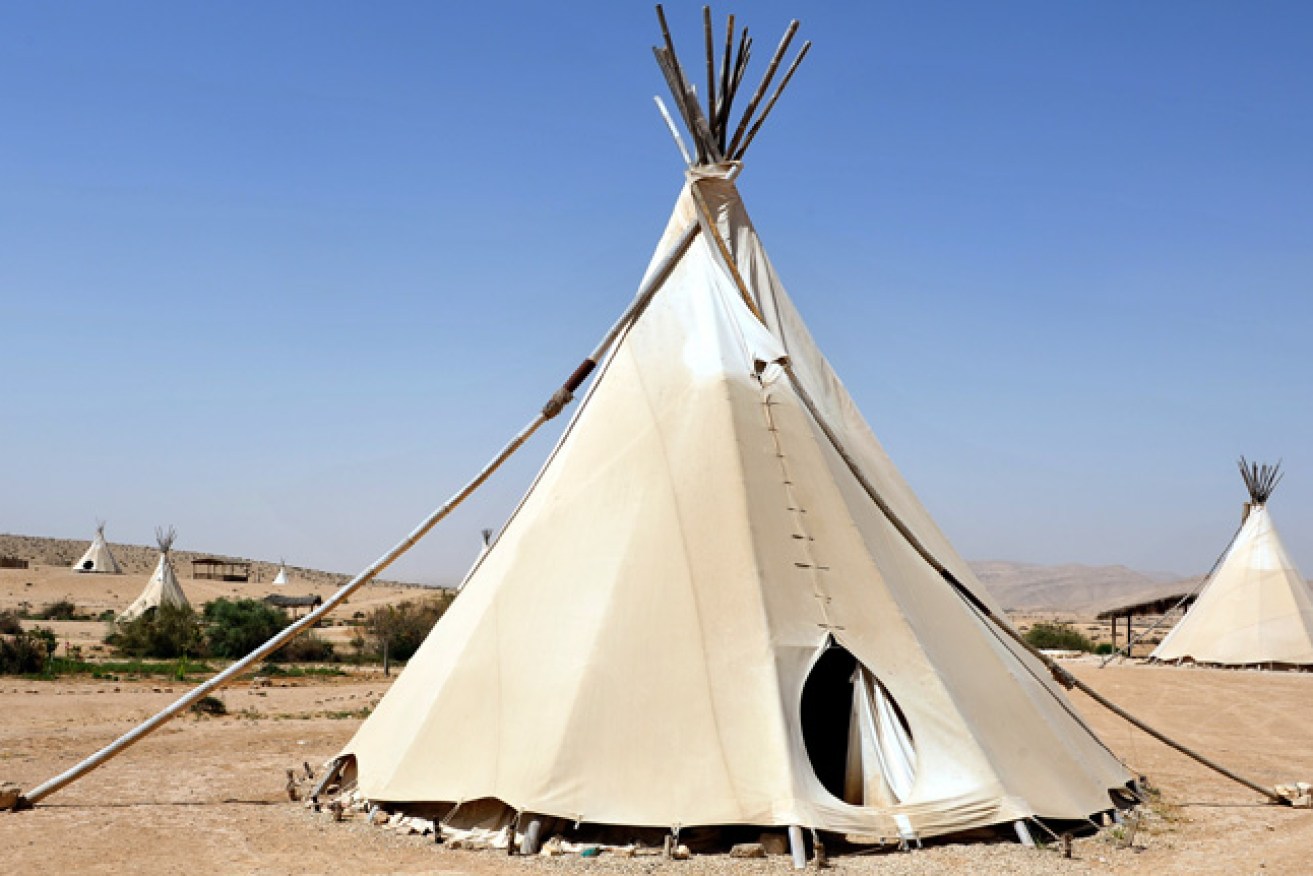How to find the tent for you: a buyer’s guide

The teepee has come back into fashion.
Many of us started our outdoor recreational pursuits camping in a tent.
I have vague memories of getting an Indian tee pee style tent one birthday as a little tacker that was firmly planted on the front lawn for the holiday period and that was the start of it for me; albeit half a century ago!
I still migrate between caravans, camper trailers and to this day, tents as well.
• More solo women hitting the road
• The coolest caravans ever
• Ecocapsule egg breaks the mould
Tents give one the versatility you can’t get when towing a caravan or camper.
With a tent slung up and tied down on a roof rack the towbar might better be occupied with a box trailer carrying other important outdoor toys such as motor or quad bikes, bicycles, fridge, freezer and other supplies as well as all important bulk fresh water storage.
So what should you start looking for when contemplating a canvas roof over your head?
Size matters
While the dimensions you require in a sleeping quarter might seem obvious there are a couple of things to take into account when looking at size and manufacturer’s descriptions of a potential purchase.
Generally a tent is given a model number that denotes the amount of people it can house overnight.

Oh, the places you’ll go.
What most manufacturers will not tell you in their blurbs on their brochures is that it relates to people sleeping on the ground in sleeping bags or similar.
An average camp stretcher will take up the room of around 1.5 people and a pair of large camp stretchers will turn a five man tent into one that has room for two with a thin aisle between and only storage potential under the stretcher.
A five man tent might well handle five men, provided they are all of an average size and are happy to be squeezed in like sardines in a tin.
Throw in one oversized person and the nominated potential of the tent is quickly put out of kilter.
Beef up your awnings
Most tents come with an awning of sorts that’s strutted on a couple of telescopic poles held by guy ropes.
As the sun moves from dawn to dusk and the wind changes direction due to seasonal vagaries, it pays to be flexible to take advantage of any shade and rain shelter offered by the straight top awning.
It’s all well and good provided you like shifting yourself and gear around but if you’re not home and a rain squall comes through, vital supplies might be drenched.
Looking for a caravan? Search nationwide here
If your tent is anchored in the position you are happy with, why change it?
Weighty issue
Canvas is measured in ounces per square yard. The higher the canvas weight the heavier the end manufactured product will be.
Generally though you will find canvas on good quality camper trailers running between 12oz up to 15oz, the latter being the heaviest commonly encountered in the camping arena.

Tents come from one-man pockets to ten-man monsters.
Rather than dive in and decide on the heaviest canvas, I would enquire about other aspects of the product such as its tightness of weave, how it stitches up and its waterproofing qualities, before considering whether it should be the heaviest available.
At some stage you need to be able to carry, erect, disassemble and transport this unit without becoming the victim of a hernia.
Easy set-up please
There are easy tents to erect and there are others that will give you a migraine thinking about what lays before you.
Get your camping store assistance to run you through setting up the prospective purchase to see it is within your capabilities. Sure, you’ll eventually get it right but you don’t want to come away from the first trip hating the thought of going on the second, just because you were beaten by a user un-friendly tent construction design.
The packaged product also needs to fit into what available space you have in your vehicle, on its roof or in the trailer. It may be that a flat pack will better serve your available storage space than a long round rolled up canvas.
Don’t stoop
Most tent manufacturers give dimensions of the furthest extremities and in regards height; that is to the apex of the centre of the roof.
You may well wish to lay out your temporary abode in a fashion so that you can walk around the perimeter of the inside of the tent; in which case you’re under the lowest part of the gable and your head will clash with canvas and cross strut poles as you do so. Then, you’ll be walking stooped most of the time when moving about inside.
Ideally, have a look at a prospective purchase in the erect state and physically walk about inside to ensure its profile suits yours.

There’s nothing like waking up close to the ground.
Water-tight floor
Sometime or other we all get a little precipitation when out camping and on occasions you might find you are in the watershed path of rain heading to the nearby catchment.
As water travels downhill it carries debris with it and once washed against the uphill side of your tent it will start to build. Too much is an issue and you might need to relieve the beaver dam with a shovel to prevent a complete wash away but in the meantime, comfort is everything until the rain stops and the last thing you need inside on the floor of the tent is more of what is falling on the roof outside.
The moral of this part of the story is to look for a tent that has a sealed tub floor that comes up the sides at least 100mm or four inches.
Ideally the corners of the waterproof tub floor should be vinyl welded but these types of floors are not found as often as those stitched.
Screen your screen
Sandflies, mites, mozzies and just general bugs!
They all make your camping life miserable if you let them and the only sanctuary for you when the sun settles over the horizon is often inside your tent behind effective insect screens.
Just how effective the screens are is up to you and this should be addressed before the time of purchase.
Zip ’em right
The quality of zips on your tent will dictate how much you spend after purchase keeping it in a usable condition, bearing in mind that a canvas repairer could charge a small fortune to strip and re-fit a new zip to your tent.

The teepee has come back into fashion.
Big chunky zips such as those seen on diver’s wet suits are my preferred option. They can handle salt and sand from a wind-swept beach with the least wear and tear.
Also those in your group that are a little rough with gear will have a hard time damaging such a zip as they’re made for heavy duty use.
It’s handy to have a spray can of food quality silicone in your camp box to lubricate sticky zips to prevent them wearing out prematurely.
This article was originally published on Caravancampingsales.com.au.








